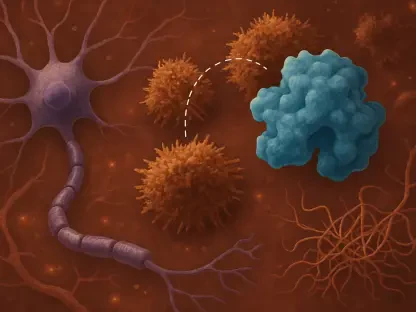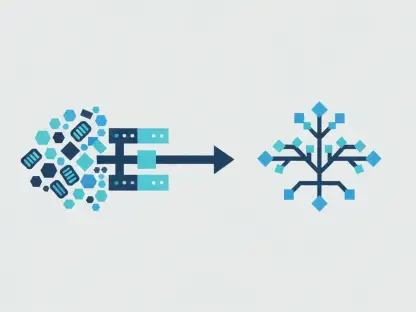Cancer therapy has always been a challenging field, with the need to balance efficacy and minimize side effects. Traditional treatments often lack precision, leading to systemic toxicity and reduced patient quality of life. In recent years, the development of drug-based nanostructures has emerged as a promising solution to these issues.
Historical Context and Current Challenges
The SEC’s cautious approach to cryptocurrencies stems from a history of regulatory challenges and evolving market dynamics. The watchdog aims to create a robust framework that addresses investor protection, market integrity, and financial stability. Current regulatory complexities are rooted in the rapid growth of digital assets, which present unique risks and opportunities. This necessitates a thorough and balanced evaluation process to ensure that new financial products align with established legal and ethical standards. As cryptocurrencies continue to develop, the SEC’s role in safeguarding the interests of all market participants becomes increasingly critical.
Evolution of Drug Delivery Systems
For centuries, humans have relied on a variety of medicinal concoctions to treat diseases. However, recent advancements in biomedical science have shifted the focus from merely creating new drugs to innovating delivery systems for existing ones. This paradigm shift aims to enhance therapeutic outcomes and mitigate side effects. Historically, the administration of drugs involved straightforward methods like oral ingestion and injections. These traditional methods, while effective to some extent, often resulted in systemic distribution of the medication, affecting both diseased and healthy cells. This indiscriminate action led to adverse effects, especially in the context of cancer treatment, where precision is paramount.
Consequently, the evolution of drug delivery systems has seen a more sophisticated approach aimed at targeting specific cell types or tissues. Researchers have gradually moved toward developing systems that can transport drugs directly to diseased cells, thereby enhancing efficacy and reducing systemic toxicity. This shift is not just a fleeting trend but rather a significant milestone in medical science as it bridges the gap between pharmacology and biotechnology. By focusing on enhancing the delivery mechanisms rather than only synthesizing new drugs, the field of medicine aims for a more effective and patient-centered approach in treatments.
Barriers in Cancer Treatment
Cancer treatment has always faced an intricate array of challenges, each one posing significant obstacles that hinder the effective delivery of therapeutic agents. These challenges include physiological, extracellular, and intracellular barriers, which collectively obstruct drugs from effectively reaching and acting upon their intended targets. The physiological barriers encompass the body’s natural defense mechanisms, such as the immune system and various metabolic pathways, which can degrade or expel therapeutic agents before they reach tumor cells. Additionally, the intricate vascular network within tumors often creates high interstitial pressure, further hindering drug penetration.
Extracellular barriers include the dense extracellular matrix that surrounds tumor cells, which acts as a physical blockade, preventing large molecules and nanoparticles from infiltrating the tumor mass. Intracellular barriers involve the complex cellular machinery that can either pump out drug molecules, recognize and degrade them, or fail to uptake them efficiently. Cancer cells often possess efflux pumps on their membranes, which can actively expel therapeutic agents, rendering treatments less effective. To navigate these barriers, advanced delivery systems are required that can either bypass or overcome these layers of resistance, ensuring that sufficient drug concentration reaches the cancer cells to exert the desired therapeutic effects.
Emergence of Nanostructured Delivery Systems
Advantages of Nanostructures
The advent of nanostructured delivery systems has revolutionized the landscape of drug delivery, offering significant benefits over traditional methods. One of the primary advantages is their ability to improve drug bioavailability and precision targeting. Nanostructures, by virtue of their small size, can navigate the complex biological environment more effectively than traditional drug formulations. This enhanced navigation leads to better penetration across various physiological barriers, ensuring that the therapeutic agents reach their target sites with higher efficiency. By focusing the drug action on specific diseased cells or tissues, nanostructured systems minimize systemic distribution and thereby reduce the risk of adverse side effects.
Moreover, the unique properties of nanostructures, such as their large surface area to volume ratio, allow for the incorporation of multiple therapeutic agents within a single carrier. This capability facilitates combination therapies, where different drugs can be delivered simultaneously to tackle various aspects of cancer cell survival and proliferation. Additionally, the ability to modify the surface properties of nanostructures enables the attachment of targeting ligands, which can recognize and bind to specific biomarkers on cancer cells. These design features not only enhance targeting but also enable controlled and sustained release of drugs, maintaining therapeutic levels over an extended period.
Self-Assembly and Supramolecular Nanostructures
Self-assembly is a fascinating process observed in molecular science where molecules are driven to organize into well-defined structures through non-covalent interactions such as hydrogen bonding, hydrophobic interactions, and van der Waals forces. This spontaneous organization process is leveraged in the development of drug-based self-assembled nanostructures. What is particularly compelling about these self-assembled systems is that they eliminate the need for additional non-drug excipients, making them highly efficient in terms of drug loading and delivery. In these systems, the drug molecules themselves participate in forming the nanostructure, acting both as therapeutic agents and structural components.
The intrinsic efficiency of supramolecular nanostructures lies in their ability to form under mild conditions, preserving the integrity and activity of the drug molecules. These assemblies can take various forms, including micelles, vesicles, and nanotubes, each offering distinct advantages for drug delivery. For instance, self-assembled micelles are highly effective in encapsulating hydrophobic drugs, enhancing their solubility and stability in the bloodstream. Supramolecular nanostructures also offer the possibility of multifunctional designs, where therapeutic agents can be combined with imaging or diagnostic molecules, paving the way for theranostic applications. This adaptability and multifunctionality make self-assembled nanostructures a promising avenue for advanced drug delivery systems.
Types of Self-Assembled Drug Systems
Natural Compounds
Natural compounds such as nucleic acids and peptides have inherent self-assembly capabilities, making them ideal candidates for developing drug-based nanostructures. These biomolecules can spontaneously organize into nanoscale structures due to their specific molecular properties, which are highly advantageous for drug delivery applications. For example, nucleic acids can form stable double helix structures that can be engineered to carry small interfering RNA (siRNA) or other therapeutic agents directly to the target cells. These structures are highly specific and can be designed to recognize and bind to particular genetic sequences or cellular markers, enhancing the precision of drug delivery.
Peptides, on the other hand, are versatile building blocks that can form a variety of nanostructures, such as hydrogels, vesicles, and fibers, depending on their amino acid sequence and environmental conditions. Peptide-based nanostructures are especially valuable because of their biocompatibility and biodegradability, which minimize potential toxicities. These structures can be engineered to respond to specific physiological triggers, such as changes in pH or temperature, enabling controlled drug release at the site of interest. The use of natural compounds not only simplifies the assembly process but also exploits the intrinsic biological functions of these molecules, making them highly effective for targeted therapies.
Single-Drug and Multi-Drug Systems
Self-assembly in drug delivery systems can be applied to both single-drug and multi-drug setups, each offering unique benefits for targeted therapy. Single-drug systems involve the self-assembly of molecules of one kind of therapeutic agent into nanostructures. This approach often leads to improved solubility and stability of the drug, as seen in the formation of micelles or liposomes around hydrophobic drugs. Single-drug self-assembly systems are relatively straightforward to design and can be optimized to enhance delivery efficiency, reduce systemic side effects, and increase overall therapeutic efficacy.
Multi-drug assemblies, on the other hand, offer an even more sophisticated approach by combining multiple therapeutic agents within a single nanostructured carrier. This method allows for the simultaneous delivery of drugs that might have synergistic effects, combating multiple pathways involved in cancer progression. Such systems often comprise complex nanostructures like drug-conjugate assemblies or multi-drug modules, which can be tailored to encapsulate or covalently bind different molecules within one framework. These assemblies not only tackle cancer cells on multiple fronts but also minimize the chance of drug resistance developing, a common challenge in oncology. The precision and flexibility of multi-drug systems make them particularly promising for achieving more potent and comprehensive cancer treatments.
Engineered Nanostructures and Targeting Approaches
Exploiting Drug Properties
Engineered nanostructures are designed with the primary goal of exploiting the intrinsic properties of drugs to form nano-sized carriers for targeted delivery. This strategic engineering enhances the efficacy and precision of cancer treatments by ensuring that the therapeutic agents are delivered directly to the pathological site. By manipulating the physicochemical properties of the drug, such as its hydrophobicity, charge, and molecular weight, researchers can create nanostructures that self-assemble or conjugate into stable, bioresponsive carriers. These carriers can navigate the biological milieu, resist premature degradation, and release the drug in a controlled manner once they’ve reached the tumor cells.
One innovative approach in this area involves the development of prodrugs, which are inactive derivatives of drugs that can self-assemble into nanostructures. These prodrugs can be activated by specific enzymes present in the tumor microenvironment, ensuring that the active drug is released precisely where it is needed. This method not only enhances targeting but also minimizes systemic exposure and associated toxicities. Additionally, the incorporation of stimuli-responsive elements, such as pH-sensitive or temperature-sensitive components, into the nanostructures allows for on-demand drug release triggered by the tumor microenvironment’s unique conditions. These engineered strategies significantly improve the therapeutic index of anticancer drugs.
Active Targeting Strategies
Active targeting strategies involve the use of ligands attached to the surface of nanocarriers to specifically recognize and bind biomarkers expressed on tumor cells. Such precision ensures that therapeutic agents are delivered directly to the diseased cells while sparing healthy tissues, thereby reducing systemic side effects and enhancing treatment efficacy. Ligands such as antibodies, peptides, and small molecules can be conjugated to the surface of nanoparticles, enabling them to home in on specific receptors or antigens overexpressed on cancer cells. This method of active targeting not only improves the localization of the drug but also facilitates its internalization into the tumor cells, increasing the intracellular drug concentration and therapeutic impact.
One notable example of active targeting is the utilization of folate receptors, which are abundantly overexpressed in several types of cancer cells. By attaching folate ligands to the surface of nanoparticles, researchers can create a system that preferentially accumulates in tumor tissues, exploiting the high affinity of cancer cells for folate. Another innovative approach involves using aptamers—short, single-stranded DNA or RNA molecules that can fold into unique three-dimensional structures capable of binding specific targets with high affinity. Aptamer-conjugated nanoparticles offer a customizable and highly selective means of targeting, which can be adapted to various types of cancer by simply changing the aptamer sequence. These examples underscore the potential of active targeting strategies in achieving more precise and effective cancer therapies.
Self-Assembled Nanomaterials
Leveraging Natural Processes
The use of natural self-assembly processes to create advanced drug delivery systems is a critical innovation that leverages the inherent properties and behaviors seen in biological systems. This approach involves utilizing molecules that naturally exhibit self-assembly capabilities, such as lipids, micelles, and DNA, to form stable and functional nanostructures. Lipids, for instance, can spontaneously form bilayers and vesicles in aqueous environments, making them ideal for encapsulating hydrophobic drugs and protecting them from degradation in the bloodstream. Additionally, lipid-based self-assembled structures can merge with cell membranes, facilitating the direct delivery of their cargo into cells.
Micelles, another example of self-assembling nanostructures, are formed by amphiphilic molecules that arrange themselves in aqueous solutions to hide their hydrophobic tails, creating a core-shell structure. This configuration is particularly useful for solubilizing hydrophobic drugs, enhancing their bioavailability and stability. DNA, known for its precision and reliability in biological processes, can also be engineered to form complex nanostructures through hybridization and stacking interactions. These DNA-based assemblies can serve as carriers for therapeutic agents or genes, making them highly versatile for various medical applications. By mimicking the natural processes of self-assembly, researchers are able to design drug delivery systems that are not only efficient but also biocompatible and highly functional.
Preparation Techniques
The preparation of self-assembled nanostructures involves various techniques, each selected based on the desired properties of the resulting nanostructures and the therapeutic agents they will carry. Common methods include solvent evaporation, thin-film hydration, and nanoprecipitation, all of which are geared towards creating stable and functional nanostructures. Solvent evaporation involves dissolving both the drug and enhancing agents in a volatile organic solvent, which is then evaporated under controlled conditions to form a thin film. Hydration of this film in an appropriate aqueous solution results in the formation of nanostructures such as liposomes or micelles.
Thin-film hydration, another widely used technique, involves the deposition of a thin film of lipid or amphiphilic molecules on a container wall followed by hydration with an aqueous phase. This method is particularly effective for forming multilamellar vesicles that can be processed further into unilamellar vesicles through sonication or extrusion. Nanoprecipitation, a method suited for producing polymeric nanoparticles, involves the addition of a solvent containing the drug and polymer into a non-solvent, leading to the rapid formation of nanoparticles as the polymer precipitates out of solution. This approach allows for the precise control of particle size and drug-loading efficiency, making it ideal for creating consistent and effective drug delivery vehicles. Each technique offers distinct advantages and can be tailored to optimize the formation of nanostructures specific to different therapeutic needs.
Performance of Self-Assembled Nanostructures
Self-assembled nanostructures have emerged as a significant area of research due to their potential in various technological applications. These structures can spontaneously organize into complex arrangements, offering unique electrical, optical, and mechanical properties. Researchers have been investigating their performance in fields such as electronics, photonics, and materials science, noting that their precise formation and the ability to control their assembly are crucial for practical implementation. This advancement opens the door to innovations in device miniaturization, biomedical applications, and the development of new materials with tailored functionalities.
Design Considerations
Designing effective drug-based nanostructures requires careful consideration of various interactions, including hydrophobic, electrostatic, and hydrophilic interactions, which collectively influence the stability and functionality of the final product. Hydrophobic interactions play a crucial role in the formation of micelles and liposomes, where the hydrophobic cores encapsulate drugs, enhancing their solubility and bioavailability. Electrostatic interactions are particularly important for stabilizing these structures and ensuring that they remain intact as they navigate the biological milieu. These interactions also facilitate the attachment of targeting ligands and other functional moieties to the surface of nanostructures.
Hydrophilic interactions, on the other hand, contribute to the stability and dispersion of nanostructures in aqueous environments, which is critical for their circulation in the bloodstream. Designing nanostructures also involves considering the size, shape, and surface properties of the particles, as these factors significantly impact their biodistribution, cellular uptake, and clearance from the body. Optimization of these parameters ensures that the nanostructures can effectively reach their target sites, penetrate biological barriers, and release their therapeutic payloads in a controlled manner. By fine-tuning these design elements, researchers can create nanostructures that offer improved therapeutic outcomes with minimal side effects.
Structural Characterization
Ensuring the efficacy and safety of self-assembled nanostructures relies heavily on accurate structural characterization and integrity assessments. Techniques such as dynamic light scattering (DLS), transmission electron microscopy (TEM), and atomic force microscopy (AFM) are employed to determine the size, shape, and surface morphology of these nanostructures. DLS, for instance, measures the hydrodynamic diameter of nanoparticles in suspension, providing insights into their stability and dispersion properties. TEM and AFM offer high-resolution images of the nanostructures, revealing details about their structural integrity and surface topology.
Additionally, techniques like Fourier-transform infrared spectroscopy (FTIR) and nuclear magnetic resonance (NMR) spectroscopy are used to analyze the chemical composition and molecular interactions within the nanostructures. These methods help verify the successful encapsulation or conjugation of therapeutic agents and the presence of targeting ligands. Moreover, assessing the drug release profile through techniques like high-performance liquid chromatography (HPLC) ensures that the nanostructures release their payloads in a controlled and sustained manner. Structural characterization not only validates the design but also informs subsequent modifications and optimizations, ensuring that the nanostructures perform as intended in biological systems.
Drug-Drug Conjugates and Phytochemicals
Innovative Approaches
Innovations like self-assembling drug–drug conjugates represent a novel approach to enhancing drug delivery and theoretical efficacy. These conjugates involve the chemical linkage of two or more therapeutic agents into a single molecular entity that can self-assemble into nanostructures. This strategy not only simplifies the delivery process but also ensures the concurrent release of multiple drugs at the target site, which can be particularly beneficial in cancer therapy, where combination treatments are often more effective. The self-assembling nature of these conjugates allows for the formation of stable, well-defined nanostructures that can navigate biological barriers and efficiently deliver their payloads to tumor cells.
Another innovative approach involves the use of stimuli-responsive drug–drug conjugates that can release their therapeutic agents in response to specific triggers in the tumor microenvironment, such as changes in pH, temperature, or enzyme activity. This targeted release mechanism enhances the precision and efficacy of the treatment while minimizing systemic side effects. Additionally, the incorporation of imaging agents into these conjugates enables real-time monitoring of the drug delivery process, providing valuable insights into the therapeutic response and allowing for timely adjustments to the treatment regimen. These advances highlight the potential of self-assembling drug–drug conjugates in achieving more effective and personalized cancer therapies.
Natural Phytochemicals
The application of natural phytochemicals and traditional herbal medicine compounds as self-assembling molecules for nanostructure formation is a notable avenue of research. Phytochemicals, derived from plants, often exhibit a range of therapeutic properties, including anti-inflammatory, antioxidant, and anticancer activities. By harnessing their self-assembly capabilities, researchers can develop biocompatible and bioactive nanostructures for targeted drug delivery. For instance, curcumin, a well-known phytochemical with anticancer properties, can self-assemble into nanostructures that enhance its bioavailability and stability in the bloodstream, thereby improving its therapeutic efficacy.
Other examples include resveratrol and quercetin, which can form nanostructures that facilitate their delivery to tumor cells, maximizing their anticancer effects while minimizing potential toxicities. These natural compounds offer several advantages, such as inherent biocompatibility, reduced risk of adverse reactions, and the potential for synergistic effects when combined with conventional chemotherapeutic agents. The exploration of phytochemicals for nanostructure formation not only paves the way for novel drug delivery systems but also bridges the gap between traditional medicine and modern biotechnology, offering new possibilities for safe and effective cancer treatments.
Future Directions
Refinement of Techniques
As the field of drug-based nanostructures continues to evolve, future research should prioritize the refinement of fabrication techniques, improvement of biocompatibility, and optimization of targeting strategies. Advanced fabrication techniques, such as microfluidics and 3D-printing, offer precise control over the size, shape, and composition of nanostructures, enabling the production of highly uniform and functional drug carriers. These methods can also facilitate the large-scale production of nanostructures with consistent quality, addressing the scalability challenges associated with traditional fabrication techniques.
Enhancing the biocompatibility of nanostructures involves the use of materials that are not only safe for human use but also capable of evading the immune system and minimizing potential side effects. This can be achieved through surface modification with biocompatible polymers, such as polyethylene glycol (PEG), which reduce protein adsorption and prolong circulation time in the bloodstream. Optimizing targeting strategies, such as the development of multifunctional ligands and smart delivery systems, will further improve the precision and efficacy of drug delivery. These advancements will enhance the effectiveness of drug-based nanostructures, paving the way for more advanced and personalized cancer therapies.
Addressing Challenges
Cancer therapy has consistently been a challenging domain due to the necessity of balancing treatment effectiveness while minimizing adverse effects. Conventional treatments frequently lack precision, which can lead to widespread toxicity throughout the body and a diminished quality of life for patients. Recently, breakthroughs in the development of drug-based nanostructures have offered a promising alternative to these traditional treatment methods. These nanostructures are designed to target cancer cells with high specificity, reducing the impact on healthy cells and thus minimizing side effects. This targeted approach not only enhances therapeutic efficacy but also improves patient outcomes and quality of life. With ongoing research and technological advancements in nanomedicine, these innovative treatments continue to show potential in revolutionizing cancer therapy. By incorporating drug-based nanostructures, the trajectory of cancer treatment can shift towards more personalized, effective, and less harmful options, offering hope for better patient experiences and outcomes in the fight against cancer.









